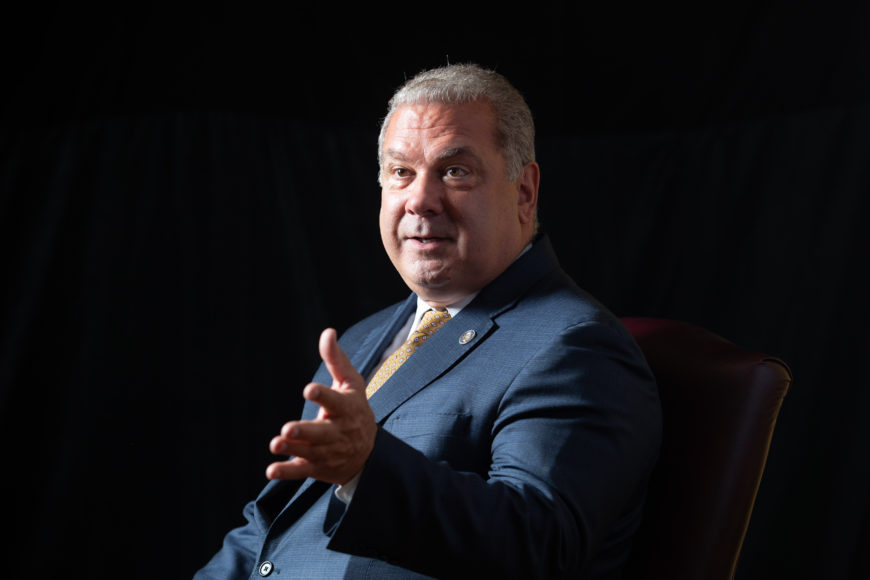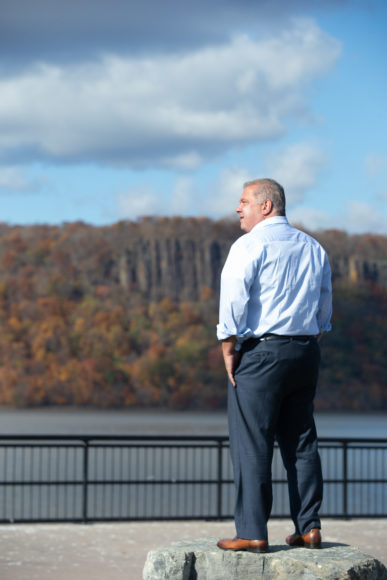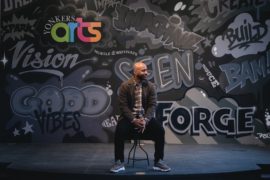Visit at length with Yonkers Mayor Mike Spano as WAG did recently and you’ll no doubt be impressed by his political savvy, charmed by his personal warmth and disarmed by the feelings he expresses for the city where he was born and raised.
“Think about this city: You’re 20 minutes out of midtown; you’re 20 minutes out of White Plains,” he says, marveling. “You have less than 40 minutes to every major airport. You have access to trains on the east side or west side of this city. You have a major highway that runs up through the middle. We are in the center of 20 million people here. So, there’s a lot of potential. If I did anything as mayor of Yonkers, I like to think I showed the city’s true potential and then everything else took its own course.”
At age 57, Spano is in his third four-year term as the city’s mayor. He was born in Yonkers on April 22, 1964, to Josephine and Leonard N. Spano, the ninth of their 16 children. With the Spano family name so enmeshed in New York government and politics — his father was a Westchester County Legislator and Clerk; his oldest sibling Nicholas was a member of both houses of the state legislature — there was no surprise when Mike Spano was elected to the New York State Assembly in 1992 as its youngest member.
Spano and his wife, WCBS-TV news anchor Mary Calvi, have three children. In a November 2014 profile of the couple in WAG, Calvi said, “Mike and I both truly enjoy our careers and our work. We have a deep respect for both endeavors and understand that with great opportunity comes great responsibility. We take that very seriously.”
Spano says that when first taking office as mayor in 2012, the nature of the serious work that needed to be done in the city was quickly apparent:
“I needed to change the perception of our city. I needed to change the perception of our city not just from the outside looking in but from the inside looking out. People in our city didn’t feel good about the place that they lived in. And you know some of it was fair. Some of it was warranted. A lot of it was not.”
Spano says that in order to change the way Yonkers was perceived, it needed to be telling a different story. It needed to get the word out that Yonkers Middle High School and Saunders Trades and Technical High School were highly ranked by U.S. News & World Report; that Yonkers was always in the top-20 safest cities for a city of its size in America; that there was so much promise in terms of economic development, especially on the waterfront.
Spano also saw a need to upgrade the housing stock throughout the city, especially the properties owned and managed by the Municipal Housing Authority for the City of Yonkers (MHACY), which is the second largest housing authority in the state behind New York City’s Housing Authority. Programs got underway to renovate or replace apartments at MHACY properties. An affordable housing ordinance was created calling for 10% affordable units in new developments.
During this time, environmental concerns were being heard.
“We knew that we had to be a green city. We knew that we could do better. We know we’re not going to solve global warming all by ourselves, but we know that we can do our part here in Yonkers in helping solve global warming,” Spano says.
A major green initiative involved changing all of the approximately 12,000 streetlights in the city to energy-efficient and low-maintenance LEDs (light emitting diodes) resulting in projected savings of at least $18 million in the first 10 years alone (Page 44). There is also an on-going push for using solar panels in the city as well as encouraging residents to sign up for electricity from renewable sources.
Spano realized that another priority was changing the way Yonkers did business with developers.
“We looked like a city that did not want to negotiate, did not want to do the things that you needed to do to bring in these deep-pocket developers,” he adds. “We weren’t able to bring the parties to the table. Yonkers always had a tough time with that. None of them would get caught dead in this town, because they didn’t like what they needed to do to move a development. They didn’t like what they had to do in terms of the red tape at city hall, in terms of trying to get labor to move in their direction. The environment wasn’t there for them to want to come here. We had a lot of work to do, but it had to start with changing the way people feel about the city, starting with the inside and working our way out. “
Over time, developers were attracted to the city as were new residents. In the 2020 U.S. Census, Yonkers became the third-largest city in New York state, edging out Rochester to move up in line behind New York and Buffalo. The Yonkers population had reached 211,569.
“According to the census, we are the fastest- growing big city in New York state. We edged out New York City for that crown with an 8% increase. Yonkers is the recipient of $4 billion worth of new development. They’re all here. Extell is already starting to build their development. AvalonBay (Communities) has built. RXR (Realty) has built. Mill Creek has built and they sold it to Apex, and so we were able to see a transformation by changing the way people think of our city.”
A major achievement under Spano has been in turning Yonkers into what is beginning more and more to look like Burbank East as a center of film and TV production. Burbank is, of course, the city just 12 miles northwest of downtown Los Angeles that is known for being home to Walt Disney Studios, Warner Bros. Studios, Nickelodeon Animation, the Columbia Pictures Ranch and, formerly, NBC, where Johnny Carson originated “The Tonight Show Starring Johnny Carson.”
The new Lionsgate movie studio at iPark near the Metro-North train station and the Hudson River has been receiving its finishing touches, with an expansion already in the works (Page 18). Also, a second, still unannounced major movie studio on a large parcel of land in the southern section of the city was moving closer to becoming reality around the time WAG met with Spano.
When Spano came into office, film and TV companies were reluctant to work in Yonkers because of the tax structure and city requirements for licensing and hiring personnel such as firemen and policemen.
“In 2011, we had two days when they filmed in this town. Now we’re getting on average over 200 days a year,” Spano says. “We got rid of that tax. We changed the way the city did business and frankly it didn’t come without some pain, because we had some of our municipal unions going to the places they were filming and saying, ‘You need to hire two of our people.’ It was lunacy and I put in place an office just for filming with one person in charge of it and said, ‘If you need to hire two firefighters, then you better be doing pyrotechnics. If not, then we don’t need firefighters. Do we need cops? We’ll hire cops if we need them. We’ll hire public works crews if we need them, but we’re not going to go there and almost to the point where it looked like we’re going to hold you up for these employees.”
Spano — who is in his last term as mayor and is rumored to be eyeing a run for governor — said that the stage is set for people to see similarities in the relationship between Burbank and Los Angeles and the relationship between Yonkers and New York City.
“We’re talking not hundreds of employees. We’re talking thousands of employees. We’re talking other film studios that are following. We’re also talking about some other things that kind of travel along with film studios that are going to have a real positive effect on the people of this community.”





